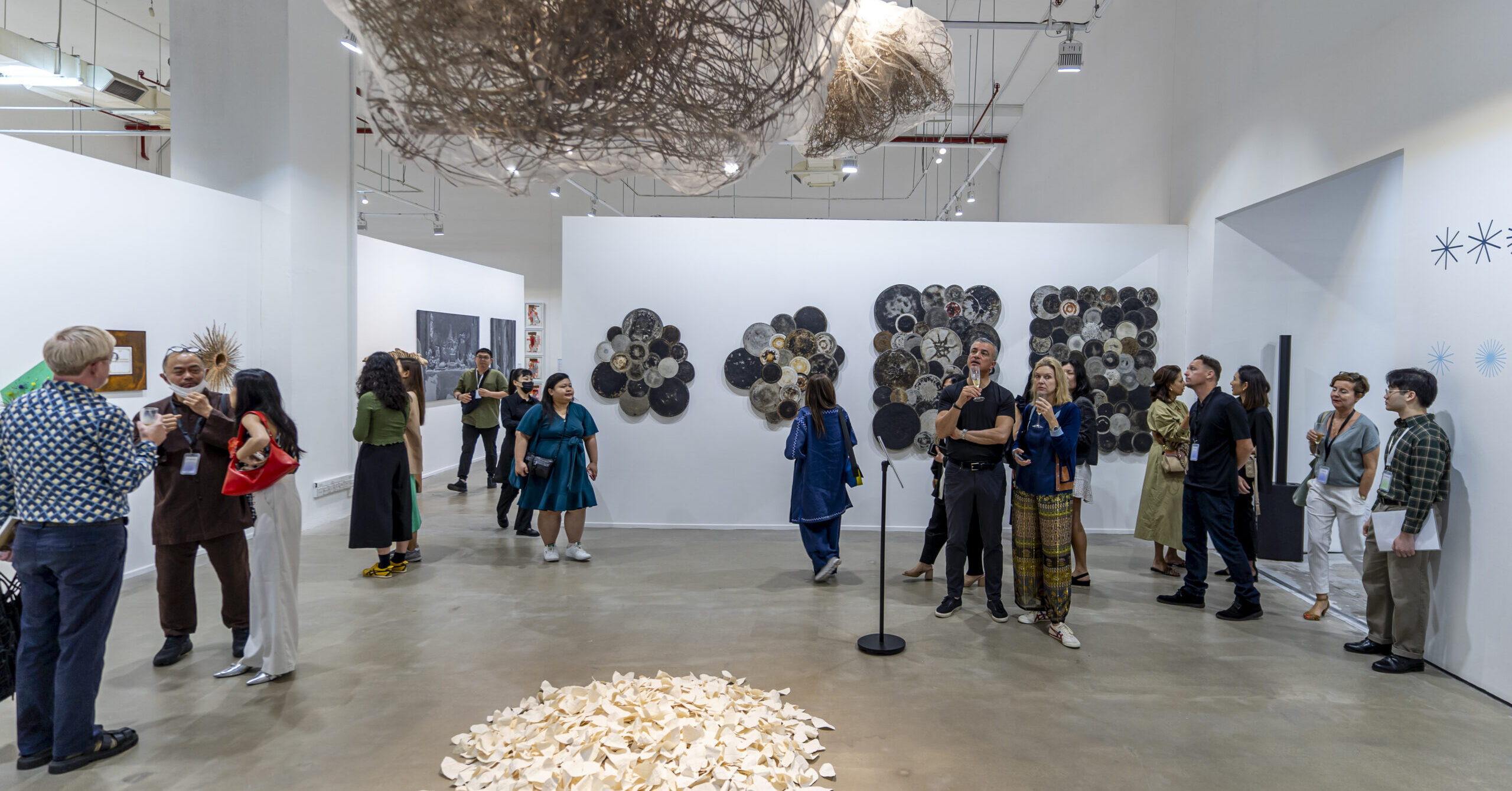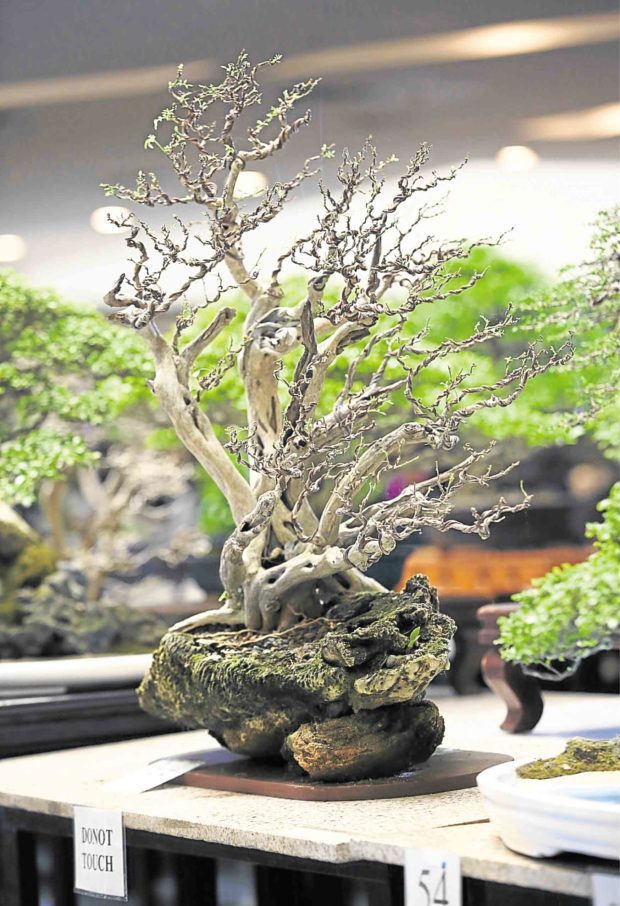
The art of bonsai cannot be learned overnight. It requires years of training, devotion, inexhaustible patience and many ruined trees before anyone gets it right.
So when a mallgoer accidentally brushed against the bonsai tree of Bobby P. Gopiao, he was clearly upset—and reasonably so. Pruning a single branch to grow more than an inch can sometimes take anywhere from five to six years.
“Bonsai is a combination of horticulture skills and art,” said Gopiao, president of the Philippine Bonsai Society. “You start designing the tree when it begins to live. You have to select early on which branches to grow and which direction they’ll take.”

Gopiao was among the exhibitors at “Sanib Pwersa,” the bonsai exhibit/workshop at SM The Block North Edsa last week. The event drew masters from Asia and showed more than 200 bonsai trees, suiseki viewing stones and ikebana creations. It was the first time three Japanese garden art forms were featured in one big Philippine show.
Masters
In attendance were bonsai masters Kunio Kobayashi from Japan, and Amy Liang, Yen Zi Jing and Wu Jian Zhang from Taiwan; viewing-stones experts Thomas Elias from the United States and Hiromi Nakaoji from Japan; and Ikenobo professor Romeo Balderrama Jr. from the Philippines.
“There’s a growing appreciation for bonsai,” said Steven Tan, COO, SM Supermalls. “We are here to support art and culture. The mall is not just a place for you to go shopping but to appreciate art.”
Gopiao fell in love with the art in 1975, when a Jesuit taught him how to practice bonsai in his high school’s botany club. In 2003, his bantigue bonsai, a coastal tree endemic to the Philippines, bagged Best in the World. Today he has a collection of 70 big and small bonsai trees.
Bonsai is a Japanese word that means “planted in a container.” The art form originated in China, Gopiao said, then moved to Japan somewhere between the 4th and 10th centuries. The Japanese monks further developed it into what we know now as bonsai. Bonsai requires one to know horticultural techniques and to demonstrate Asian aesthetics.
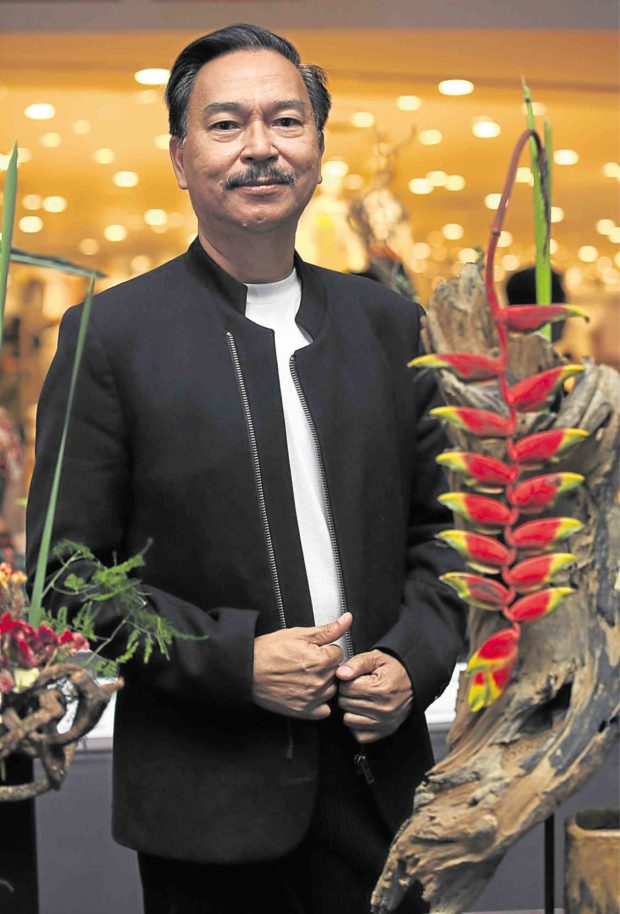
“I love the whole process,” Gopiao said. “The creation is constant work because you’re dealing with nature. Just like painting, you have to visualize ahead of time, except that bonsai takes much, much longer to do.”
Philippine Bonsai Society now has 36 affiliates around the country, he said. Gopiao is introducing juniper bonsai to the Philippine market. He said the imperial trees in Japan are between 300 to 400 years old. Juniper trees in the wild, however, can last from 2,000 to 3,000 years.
Ikebana
Ikebana creations were also on exhibit.
“Originally, these are cut flowers arranged for the temple. The flower arrangement is a prayer of thanksgiving,” said physician Romeo P. Balderrama Jr., former president of Ikenobo Ikebana Society of Manila No. 67.
The minimalist art of Japanese flower arrangement can be traced back to the 6th century with the introduction of Buddhism in Japan from China. Chinese Buddhist missionaries had formalized the ritual of offering flowers to the Buddha, which eventually became known as ikebana. (Ikenobo is the name of the school and its distinct style, ikebana is the practice.)
Today, there are 2,000 schools of ikebana around the world.
“Ikebana means living flower. ‘Ike’ means living, ‘bana’ means flower,” Balderrama said. “The arrangement is symbolical. A classical arrangement has nine parts. It is a scenery with mountains and rivers.”
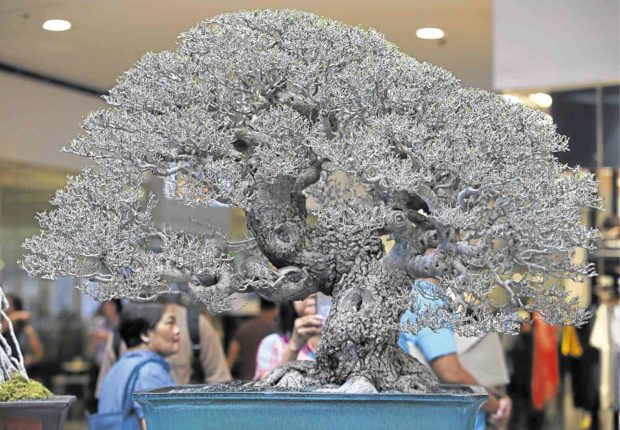
If Western flower arrangements fill out the spaces, in ikebana, space adds beauty to the arrangement, he said.
Balderrama was introduced to ikebana 20 years ago when he lived and studied in Japan. “I’ve loved plants since high school. I find ikebana relaxing, especially since it deals with nature that you know in a few days will be gone.”
‘Suiseki’
Among the Japanese art on exhibit, the most unfamiliar were suiseki, or viewing stones. Viewing stones are often set on delicate wooden stands or trays called daizas and dobans. These are meditative pieces, explained Anthony V. Gedang, president of the National Stone Society of the Philippines.

The art focuses on the aspects of stone, such as immortality, longevity and stability. Like Bonsai, suiseki originated in China before migrating to Japan, Gedang said. There are several forms of suiseki: abstract, landscape, planetary, object, plant and weather.
“Suiseki used to be displayed in emperor palaces,” Gedang said. “They were also called scholar stones since scholars used to reflect on the stones on their table or garden… So what you see may be a stone, but I see a cave, a boat, a watershed.”
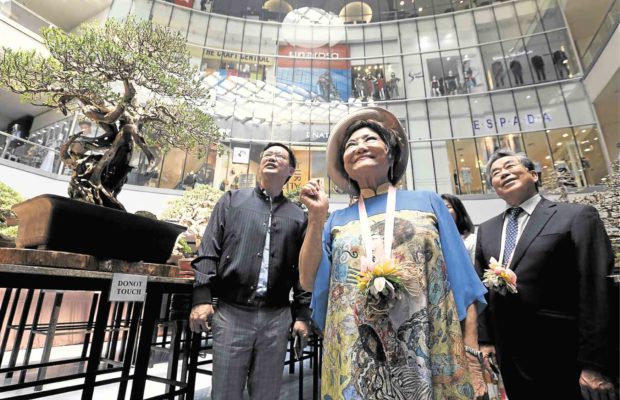
The stones are not manipulated to take certain shapes, he said. These are natural stones exposed to heat, sun or rain to give them character. “The patination process makes them look very old, but the human hand oil is the best patina. They only need your touch.”
Gedang held a workshop on how to combine bonsai and stones. He has more than 3,000 bonsai trees and 2,000 stones in his house, he said. Gedang is the only Filipino who joins international competitions.





